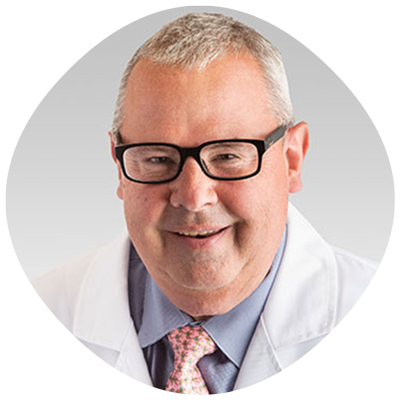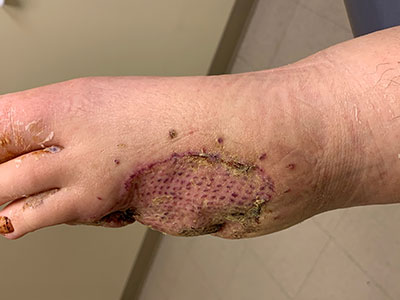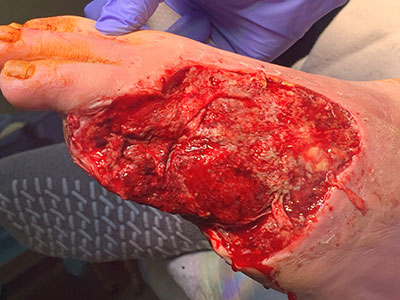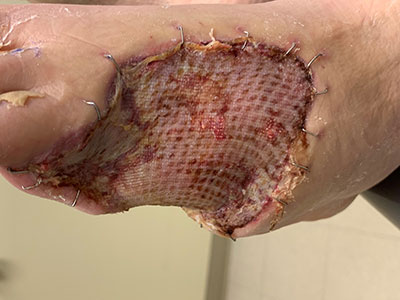Application in a Necrotizing Soft Tissue Infection

James Geiger, Jr. DPM, CWSP
Northwestern Medicine Regional Medical Group – Palos Heights, IL

Initial Defect

Week 8
Results
- STSG fully integrated
- No complications
- Pliable scar
- Back in shoes and back to work
- No recurrence at 6-month follow-up
- Single application of Myriad
Patient details
28-year-old male
Medical history
Insulin-dependent diabetes
Case details
- Presents with necrotizing soft tissue infection, sepsis
- Plan: Medically manage infection followed up by surgical debridement
Application photos

Procedure
- 1st Stage: Resection of non-viable bone and soft tissue
- Volumetric defect with exposed bone and tendon
- Covered with a non-adherent and NPWT at 125 mmHg

Procedure
- 2nd Stage: Debridement and application of Myriad Matrix (10 x 10 cm, 5-Layer)
- Volumetric defect with exposed bone and tendon
- Secured with staples
- Covered with a non-adherent and NPWT at 125 mmHg

Week 1
- Myriad Matrix fully integrated revealing 100% viable granulation tissue
- Full coverage of exposed bone and tendon
- Now hospitable wound bed for STSG
- Secondary Dressing: Contact layer and continue NPWT at 125 mmHg

Week 3
(2 weeks after STSG application)
- 90% take of STSG
- Graft epithelializing within interstices
- Secondary Dressing: Petroleum contact layer and continue NPWT at 125 mmHg

Week 8
- STSG fully integrated
- No complications
- Pliable scar
- Functional foot
- Back in shoes and back to work
- No recurrence at 6-month follow-up
Results may vary. Dr. James Geiger has a consultancy agreement with Aroa Biosurgery Limited.
